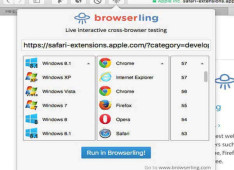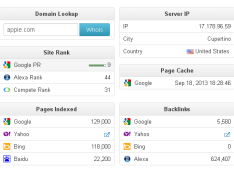Overview: In this comprehensive tutorial, we'll explore the world of cloud computing, covering its benefits, types, and services. We'll also delve into implementing cloud solutions using Laravel and PHP, providing you with a solid foundation for building scalable and efficient cloud-based applications.
Cloud computing has transformed the way we approach IT infrastructure, offering numerous benefits, including scalability, flexibility, and cost-effectiveness. In this tutorial, we'll explore the world of cloud computing, covering its benefits, types, and services, as well as how to implement cloud solutions using Laravel and PHP.
What is Cloud Computing?
Cloud computing refers to the delivery of computing resources and services over the internet, allowing users to access and utilize them on-demand. This approach eliminates the need for local infrastructure, reducing costs and increasing efficiency.
Benefits of Cloud Computing
Cloud computing offers numerous benefits, including:
- Scalability: Cloud resources can be quickly scaled up or down to meet changing business needs.
- Flexibility: Cloud services can be accessed from anywhere, on any device, at any time.
- Cost-effectiveness: Cloud computing eliminates the need for local infrastructure, reducing costs and increasing efficiency.
Types of Cloud Computing
There are three main types of cloud computing:
- Infrastructure as a Service (IaaS): Provides virtualized computing resources, such as servers, storage, and networking.
- Platform as a Service (PaaS): Offers a complete platform for developing, running, and managing applications.
- Software as a Service (SaaS): Provides software applications over the internet, eliminating the need for local installation and maintenance.
Cloud Services
Cloud services can be categorized into:
- Compute Services: Provide virtualized computing resources, such as AWS EC2 and Azure Virtual Machines.
- Storage Services: Offer scalable and durable storage solutions, such as AWS S3 and Azure Blob Storage.
- Database Services: Provide managed database solutions, such as AWS RDS and Azure Database Services.
- Security Services: Offer security features, such as identity and access management, threat detection, and encryption.
Implementing Cloud Solutions with Laravel and PHP
Laravel, a popular PHP framework, provides excellent support for building cloud-based applications. Let's explore how to implement a simple cloud solution using Laravel and PHP.
use Illuminate\Support\Facades\Storage;
class CloudController extends Controller {
public function uploadFile(Request $request) {
$file = $request->file('file');
$filename = $file->getClientOriginalName();
Storage::cloud()->put($filename, file_get_contents($file));
return response()->json(['message' => 'File uploaded successfully']);
}
}
In this example, we're using Laravel's Storage facade to upload a file to a cloud storage service, such as AWS S3 or Azure Blob Storage.
Configuring Cloud Storage
To use cloud storage with Laravel, we need to configure the storage settings in the config/filesystems.php file.
'cloud' => [
'driver' => 's3',
'key' => env('AWS_ACCESS_KEY_ID'),
'secret' => env('AWS_SECRET_ACCESS_KEY'),
'region' => env('AWS_DEFAULT_REGION'),
'bucket' => env('AWS_BUCKET'),
],
In this example, we're configuring the cloud storage driver to use AWS S3.
Using Cloud Services with Laravel
Laravel provides excellent support for cloud services, including AWS, Azure, and Google Cloud. Let's explore how to use cloud services with Laravel.
use Aws\S3\S3Client;
class CloudController extends Controller {
public function listBuckets() {
$s3Client = new S3Client([
'version' => 'latest',
'region' => env('AWS_DEFAULT_REGION'),
]);
$buckets = $s3Client->listBuckets()->get('Buckets');
return response()->json(['buckets' => $buckets]);
}
}
In this example, we're using the AWS SDK for PHP to list the available buckets in an AWS S3 account.








Leave a Comment